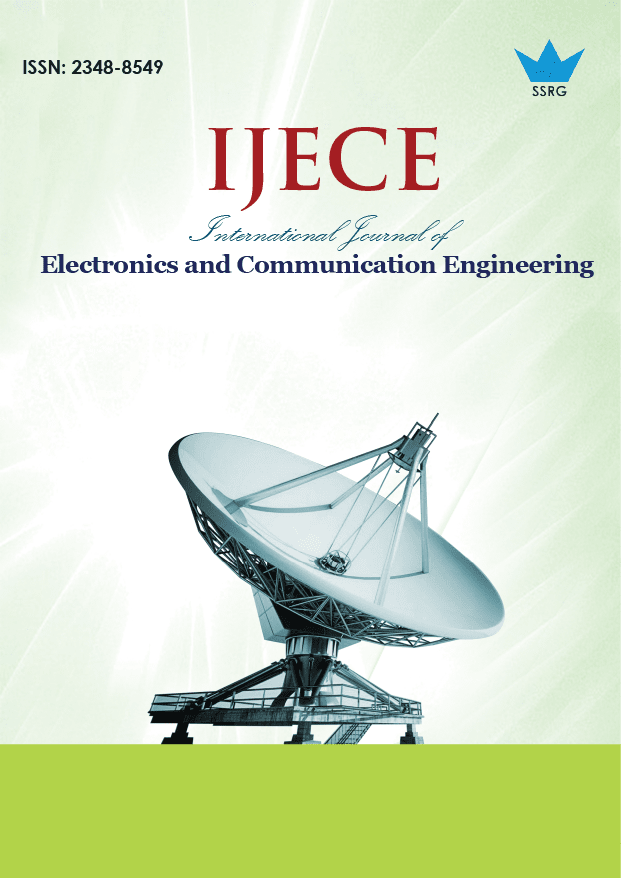Adaptive User Authentication in Mobile Crowd Sensing via Nash Equilibrium Strategy Optimization

| International Journal of Electronics and Communication Engineering |
| © 2025 by SSRG - IJECE Journal |
| Volume 12 Issue 7 |
| Year of Publication : 2025 |
| Authors : S. Domi Evangeline, G. Usha |
How to Cite?
S. Domi Evangeline, G. Usha, "Adaptive User Authentication in Mobile Crowd Sensing via Nash Equilibrium Strategy Optimization," SSRG International Journal of Electronics and Communication Engineering, vol. 12, no. 7, pp. 407-414, 2025. Crossref, https://doi.org/10.14445/23488549/IJECE-V12I7P132
Abstract:
Depending on user-contributed data from mobile devices for large-scale sensing applications, Mobile Crowd Sensing (MCS) has severe risks from malicious activity, erroneous data, and inadequate authentication techniques. This work proposes a paradigm for adaptive user authentication, overcoming these obstacles by using the Nash equilibrium method optimization. The concept sees user-platform interactions as a game of strategy in which users try to increase value while reducing system-compromising risk. The system comprises a lightweight cryptographic protocol to safeguard communications without overloading devices, probabilistic validation to modify authentication intensity dynamically, and an adaptive trust score technique to assess user dependability based on previous behavior. Trust ratings support validation that uses resources effectively; uncertainty given by probabilistic checkpointing discourages manipulation. In terms of lowest overhead and low false positive rates, the suggested method outperforms traditional static and reputation-based models, thereby obtaining excellent detection accuracy. Regarding user identification in real-time MCS systems, the proposed model offers an innovative, scalable, safe alternative.
Keywords:
Mobile crowd sensing, Nash equilibrium, Adaptive authentication, Trust scoring, Game theory.
References:
[1] Tu N. Nguyen, and S. Zeadally, “Mobile Crowd-Sensing Applications: Data Redundancies, Challenges, and Solutions,” ACM Transactions on Internet Technology, vol. 22, no. 2, pp. 1-15, 2021.
[CrossRef] [Google Scholar] [Publisher Link]
[2] Zhang Huanan, Xing Suping, and Wang Jiannan, “Security and Application of Wireless Sensor Network,” Procedia Computer Science, vol. 183, pp. 486-492, 2021.
[CrossRef] [Google Scholar] [Publisher Link]
[3] Taher M. Ghazal et al., “IoT for Smart Cities: Machine Learning Approaches in Smart Healthcare-A Review,” Future Internet, vol. 13, no. 8, pp. 1-19, 2021.
[CrossRef] [Google Scholar] [Publisher Link]
[4] Zice Sun et al., “A Two-Stage Privacy Protection Mechanism based on Blockchain in Mobile Crowdsourcing,” International Journal of Intelligent Systems, vol. 36, no. 5, pp. 2058-2080, 2021.
[CrossRef] [Google Scholar] [Publisher Link]
[5] Hamed Taherdoost, “Data Collection Methods and Tools for Research: A Step-by-step Guide to Choose Data Collection Technique for Academic and Business Research Projects,” International Journal of Academic Research in Management, vol. 10, no. 1, pp. 10-38, 2021.
[Google Scholar] [Publisher Link]
[6] Daniel Díaz-Sánchez et al., “TLS/PKI Challenges and Certificate Pinning Techniques for IoT and M2M Secure Communications,” IEEE Communications Surveys & Tutorials, vol. 21, no. 4, pp. 3502-3531, 2019.
[CrossRef] [Google Scholar] [Publisher Link]
[7] V. Saravanan et al., “Securing the Digital Frontier: An Analysis of Cybersecurity Strategies and Obstacles,” 2025 International Conference on Computational, Communication and Information Technology (ICCCIT), Indore, India, pp. 741-746, 2025.
[CrossRef] [Google Scholar] [Publisher Link]
[8] Srinivasa Raghavendra Bhuvan Gummidi, Xike Xie, and Torben Bach Pedersen, “A Survey of Spatial Crowdsourcing,” ACM Transactions on Database Systems, vol. 44, no. 2, pp. 1-46, 2019.
[CrossRef] [Google Scholar] [Publisher Link]
[9] Devrim Unal et al., “A Secure and Efficient Internet of Things Cloud Encryption Scheme with Forensics Investigation Compatibility based on Identity-Based Encryption,” Future Generation Computer Systems, vol. 125, pp. 433-445, 2021.
[CrossRef] [Google Scholar] [Publisher Link]
[10] Mayur Rele et al., “Secure Data Analytics in Smart Grids: Preserving Privacy and Enabling Advanced Monitoring,” Proceedings of the International Conference on Sustainable Energy and Environmental Technology for Circular Economy, Bangkok, Thailand, pp. 127-137, 2025.
[CrossRef] [Google Scholar] [Publisher Link]
[11] Dai Shi et al., “Fine-Grained and Context-Aware Behavioral Biometrics for Pattern Lock on Smartphones,” Proceedings of the ACM on Interactive, Mobile, Wearable and Ubiquitous Technologies, vol. 5, no. 1, pp. 1-30, 2021.
[CrossRef] [Google Scholar] [Publisher Link]
[12] Hansub Shin et al., “A New Smart Smudge Attack using CNN,” International Journal of Information Security, vol. 21, pp. 25-36, 2022.
[CrossRef] [Google Scholar] [Publisher Link]
[13] Dai Shi, and Dan Tao, “Sensor Fusion based Implicit Authentication for Smartphones,” China Conference on Wireless Sensor Networks, Dunhuang, China, pp. 157-168, 2020.
[CrossRef] [Google Scholar] [Publisher Link]
[14] Fabio Valerio Massoli et al., “Detection of Face Recognition Adversarial Attacks,” Computer Vision and Image Understanding, vol. 202, 2021.
[CrossRef] [Google Scholar] [Publisher Link]
[15] E. Nirmala et al., “Blockchain-Based Trust Management for Secure and Transparent Communication in Vehicular Ad-Hoc Networks,” Journal of Environmental Protection and Ecology, vol. 26, no. 1, pp. 225-235, 2025.
[Publisher Link]
[16] Lin Wang et al., “Identity Authentication Strategy of Mobile Crowd Sensing Based on CFL,” 2022 IEEE 22nd International Conference on Software Quality, Reliability and Security (QRS), Guangzhou, China, pp. 139-146, 2022.
[CrossRef] [Google Scholar] [Publisher Link]
[17] Zuodong Jin, Muyan Yao, and Dan Tao, “Implicit Authentication with Sensor Normalization and Multi-Modal Domain Adaption based on Mobile Crowd Sensing,” CCF Transactions on Pervasive Computing and Interaction, vol. 4, pp. 370-380, 2022.
[CrossRef] [Google Scholar] [Publisher Link]
[18] Jingwei Liu et al., “EPDA: Enhancing Privacy-Preserving Data Authentication for Mobile Crowd Sensing,” IEEE Global Communications Conference, Singapore, pp. 1-6, 2017.
[CrossRef] [Google Scholar] [Publisher Link]
[19] Pengchen Ma, Dan Tao, and Tinyu Wu, “A Pseudonym based Anonymous Identity Authentication Mechanism for Mobile Crowd Sensing,” 2017 3rd International Conference on Big Data Computing and Communications (BIGCOM), Chengdu, China, pp. 10-14, 2017.
[CrossRef] [Google Scholar] [Publisher Link]
[20] Yang Shi et al., “Obfuscatable Anonymous Authentication Scheme for Mobile Crowd Sensing,” IEEE Systems Journal, vol. 13, no. 3, pp. 2918-2929, 2019.
[CrossRef] [Google Scholar] [Publisher Link]

 10.14445/23488549/IJECE-V12I7P132
10.14445/23488549/IJECE-V12I7P132